Getting Into the
Halloween Spirit
by Bob Brooke
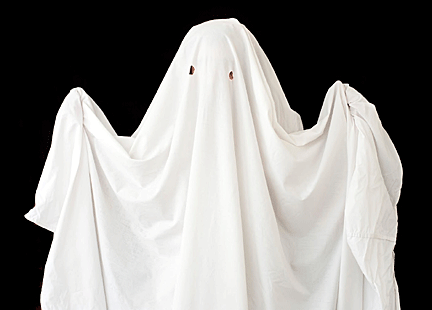 Today,
Halloween is synonymous with dressing up as weird characters, ghosts,
goblins, clowns, and animals. Creativity reigns. And while the emphasis
on children around Halloween has been around since the 19th century, in
recent years, adults have taken the wearing of Halloween costumes to a
whole new sophisticated level. Today,
Halloween is synonymous with dressing up as weird characters, ghosts,
goblins, clowns, and animals. Creativity reigns. And while the emphasis
on children around Halloween has been around since the 19th century, in
recent years, adults have taken the wearing of Halloween costumes to a
whole new sophisticated level.
The tradition of dressing in costume for Halloween has both European and
Celtic roots.
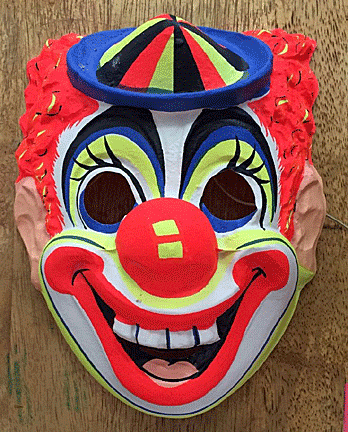 Hundreds
of years ago, winter was an uncertain and frightening time. Food
supplies often ran low and, for the many people afraid of the dark, the
short days of winter were full of constant worry. Hundreds
of years ago, winter was an uncertain and frightening time. Food
supplies often ran low and, for the many people afraid of the dark, the
short days of winter were full of constant worry.
On Halloween, when it was believed that ghosts came back to the earthly
world, people thought that they would encounter ghosts if they left
their homes. To avoid being recognized by these ghosts, people would
wear masks when they left their homes after dark so that the ghosts
would mistake them for fellow spirits.
During the Great Depression, a child’s costume could be as simple as a
bedsheet with holes cut out for eyes and a mouth. Other children dressed
in their parents’ old clothes or whatever they could find.
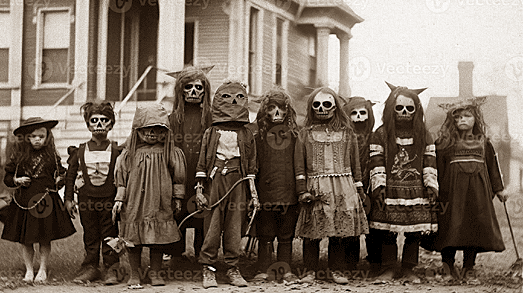
 The
early origins of Halloween costumes can be traced back to ancient Celtic
traditions. During the festival of Samhain, the Celts believed that
spirits would roam the earth. To ward off these spirits and disguise
themselves, people wore masks and costumes made from animal hides. This
practice was also influenced by the belief that the boundary between the
living and the dead was blurred during this time. The
early origins of Halloween costumes can be traced back to ancient Celtic
traditions. During the festival of Samhain, the Celts believed that
spirits would roam the earth. To ward off these spirits and disguise
themselves, people wore masks and costumes made from animal hides. This
practice was also influenced by the belief that the boundary between the
living and the dead was blurred during this time.
The Druids built huge sacred bonfires, where people gathered to burn
crops and animals as sacrifices to the Celtic deities. During the
celebration, the superstitious Celts would disguise themselves with
animal heads and skins. They would make lots of noise to fool
troublesome spirits into thinking that they were one of them or to scare
them away.
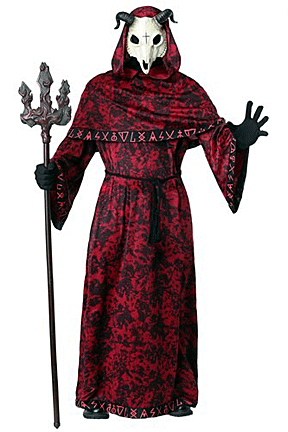 During
Samhain, an extra place was set at the table as an offering to deceased
loved ones. Food was also placed outside, near the doorway, to appease
bothersome spirits who might otherwise play tricks on the inhabitants,
such as tipping over milk containers. During
Samhain, an extra place was set at the table as an offering to deceased
loved ones. Food was also placed outside, near the doorway, to appease
bothersome spirits who might otherwise play tricks on the inhabitants,
such as tipping over milk containers.
When the celebration was over, they re-lit their hearth fires, which
they had extinguished earlier that evening, from the sacred bonfire to
help protect them during the coming winter.
In medieval Europe, Halloween costumes began to have a religious
significance. People dressed up as saints, demons, and mythical
creatures to reenact religious stories and protect themselves from evil
spirits.
With the advent of Christianity, the Celts celebrated All Souls’ Day
similarly to the festival of Samhain with big bonfires, parades, and
dressing up in costumes as saints, angels and devils. They called All
Saints’ Day celebration All-hallows or All-hallowmas, hallow meaning “to
sanctify.”
The tradition of dressing in costume begun when Medieval churches
encouraged their congregations to dress or wear relics of the dead and
saints. During the Medieval period, costumes may have been a way to
remember the dead without having to have the churches display all the
needed relics for the dead. During the Reformation, Protestants
suppressed many of the Catholic traditions, including the celebrations
of All Saints Day and All Souls Day.
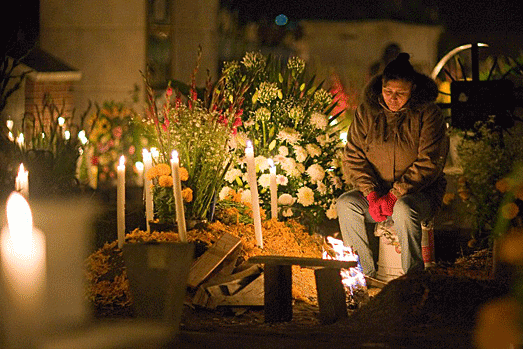
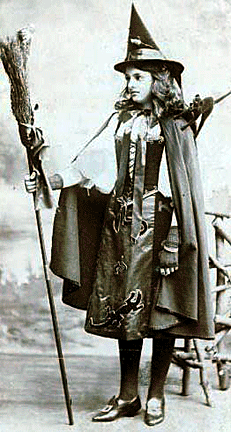 After
the Romans took over Celt-occupied lands in Britain during the 1st
century CE, they combined many of the Celtic traditions, including
Samhain, with their own, evolving into All Hallows’ Day. Later, the
Roman Catholic Church designated November 1 as All Saints’ Day in honor
of all Catholic saints. It was celebrated with a mass, bonfires, and
people costumed as angels and saints parading through the villages.
November 2 brings All Souls’ Day, a holy day set aside for honoring the
dead and departed. After
the Romans took over Celt-occupied lands in Britain during the 1st
century CE, they combined many of the Celtic traditions, including
Samhain, with their own, evolving into All Hallows’ Day. Later, the
Roman Catholic Church designated November 1 as All Saints’ Day in honor
of all Catholic saints. It was celebrated with a mass, bonfires, and
people costumed as angels and saints parading through the villages.
November 2 brings All Souls’ Day, a holy day set aside for honoring the
dead and departed.
In the Middle Ages, women labeled as witches (from the Anglo-Saxon word
wicce, or “wise one”) practiced divination. Such a woman would curl up
near a fireplace and go into a trancelike state by chanting, meditating,
or using hallucinogenic herbs. Superstitious people believed that these
women flew out of their chimneys on broomsticks and terrorized the
countryside with their magical deeds.
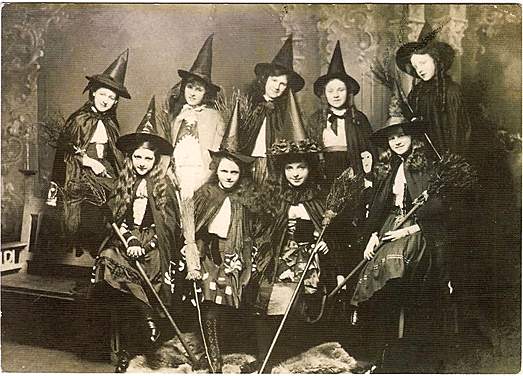
During Samhain, superstitious country folk would disguise themselves
with animal skins and masks made from sailcloth or linen. In costume,
they would go outdoors and make lots of noise in an effort to fool
troublesome spirits into thinking that they were one of them or to scare
them away.
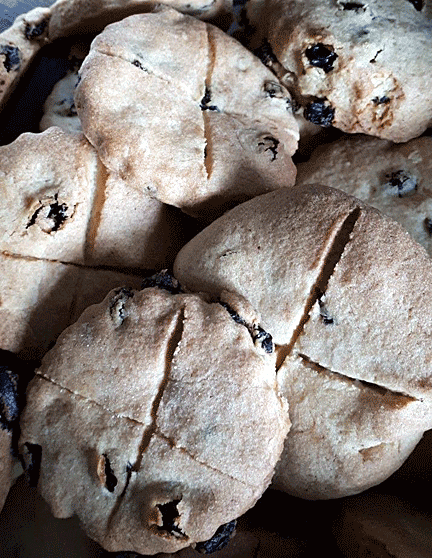 During
Samhain, an extra place was set at the table as an offering to deceased
loved ones. People also placed food outside, near the doorway, to
appease bothersome spirits who might otherwise play tricks on the
inhabitants, such as tipping over milk containers. During
Samhain, an extra place was set at the table as an offering to deceased
loved ones. People also placed food outside, near the doorway, to
appease bothersome spirits who might otherwise play tricks on the
inhabitants, such as tipping over milk containers.
The practice of trick-or-treating dates back to the Middle Ages in
England, when poor people collected baked goods called “soul cakes” from
the wealthy. The poor promised to pray for the giver’s deceased loved
ones in exchange for the cakes.
The distribution of soul cakes was encouraged by the church as a way to
replace the ancient practice of leaving food and wine for roaming
spirits. The practice, which was referred to as “going a-souling,” was
eventually taken up by children who would visit the houses in their
neighborhood and be given ale, food and money.
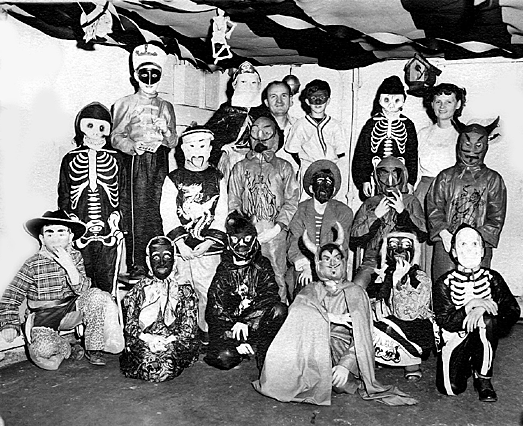
 The
tradition of dressing in costume for Halloween has both European and
Celtic roots. The
tradition of dressing in costume for Halloween has both European and
Celtic roots.
In the Celtic tradition it was believed that souls emerged on this night
as they traveled to the afterlife, so revelers donned costumes to avoid
recognition by the dead. Christian celebrants often warded off the devil
with huge bonfires, whose light attracted insects and bats to join the
festival.
Hundreds of years ago, winter was an uncertain and frightening time.
Food supplies often ran low and, for the many people afraid of the dark,
the short days of winter were full of constant worry.
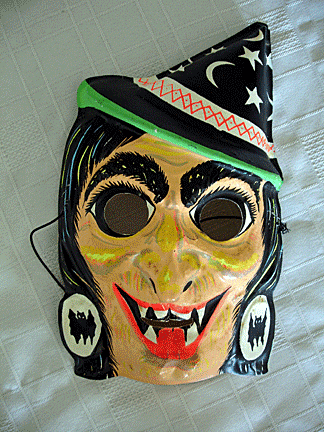 On
Halloween, when it was believed that ghosts came back to the earthly
world, people thought that they would encounter ghosts if they left
their homes. To avoid being recognized by these ghosts, people would
wear masks when they left their homes after dark so that the ghosts
would mistake them for fellow spirits. On
Halloween, when it was believed that ghosts came back to the earthly
world, people thought that they would encounter ghosts if they left
their homes. To avoid being recognized by these ghosts, people would
wear masks when they left their homes after dark so that the ghosts
would mistake them for fellow spirits.
On Halloween, to keep ghosts away from their houses, people would place
bowls of food outside their homes to appease the ghosts and prevent them
from attempting to enter.
As celebrating Halloween became popular in America in the 19th century,
wearing costumes became common. Originally, people made their own
costumes at home, inspired by historical figures or folk traditions.
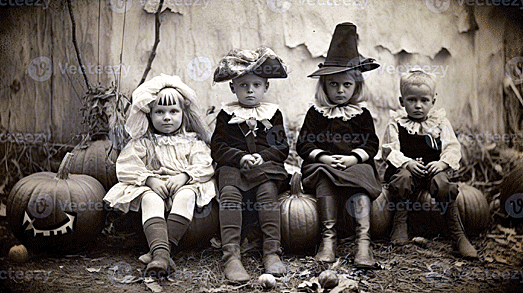
 Today,
Halloween costumes come in a variety of styles, from witches, ghosts,
horror characters, mummies, devils, angels, cowboys, and princesses to
superheroes and cartoon characters. People often made vintage costumes
out of crepe paper. The Dennison Paper Company's Bogie books and other
crepe paper books had lots of ideas and illustrations of costumes that
could be made with crepe. Finding these vintage crepe costumes, which
were often discarded after Halloween, can be a real treat for a
collector. Today,
Halloween costumes come in a variety of styles, from witches, ghosts,
horror characters, mummies, devils, angels, cowboys, and princesses to
superheroes and cartoon characters. People often made vintage costumes
out of crepe paper. The Dennison Paper Company's Bogie books and other
crepe paper books had lots of ideas and illustrations of costumes that
could be made with crepe. Finding these vintage crepe costumes, which
were often discarded after Halloween, can be a real treat for a
collector.
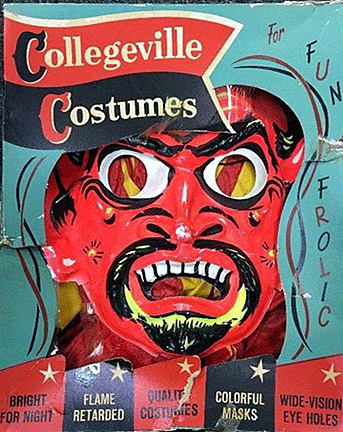 The
rise of commercial costumes changed the way people celebrated Halloween.
In the early 20th century, people made costumes at home using old
clothing and materials to make their disguises. But as the entertainment
industry grew, and Halloween became more popular, the rise of commercial
costumes gained popularity. The
rise of commercial costumes changed the way people celebrated Halloween.
In the early 20th century, people made costumes at home using old
clothing and materials to make their disguises. But as the entertainment
industry grew, and Halloween became more popular, the rise of commercial
costumes gained popularity.
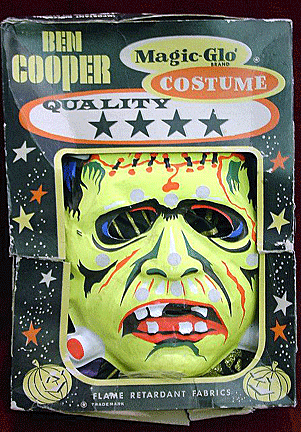 In
the 1930s, companies like Ben Cooper Inc., Collegeville, and Halco, made
commercial costumes, offering an affordable way to dress up. These
costumes featured characters from movies, TV shows, and comic books,
allowing people to dress up as their favorite fictional figures. In
the 1930s, companies like Ben Cooper Inc., Collegeville, and Halco, made
commercial costumes, offering an affordable way to dress up. These
costumes featured characters from movies, TV shows, and comic books,
allowing people to dress up as their favorite fictional figures.
Commercial costumes also made celebrating Halloween more accessible to a
wider audience. People who didn’t have the time or skills to make their
own costumes could buy one, which increased participation in the
festivities. This contributed to the commercialization of Halloween.
The success of commercial Halloween costumes led to the establishment of
dedicated costume stores and the development of costume rental services.
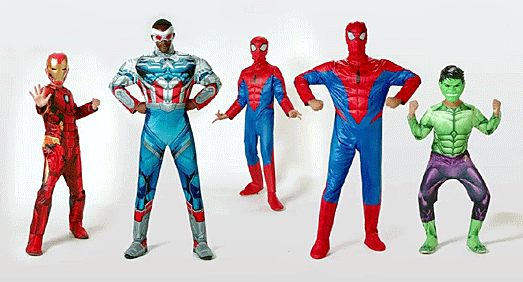
While the celebration of Halloween focused on children trick ‘o treating
in costume in the mid 20th century, later on adult Halloween parties
became popular, necessitating even more sophisticated costumes.
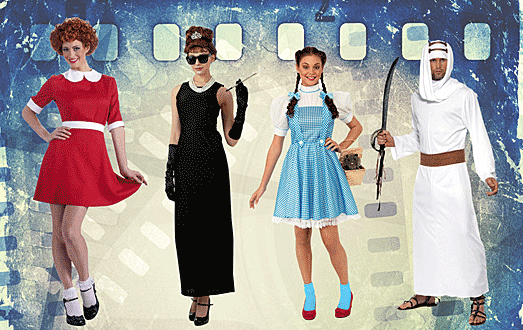
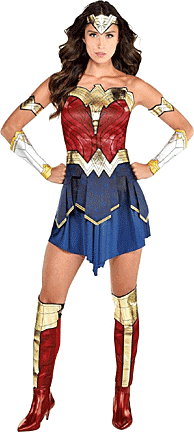 Classic
film and literature characters have become popular in recent years.
People frequently recreate characters such as Dracula, Frankenstein’s
monster, and the Wolfman from classic horror films. Sherlock Holmes,
Alice in Wonderland, and Jay Gatsby are also iconic literary characters
frequently chosen. People also dress up as characters from classic films
like Casablanca, Gone with the Wind, or Singin’ in the Rain. Elizabeth
Bennet from Pride and Prejudice, Captain Ahab from Moby-Dick, and Jane
Eyre are other commonly portrayed literary characters. Classic
film and literature characters have become popular in recent years.
People frequently recreate characters such as Dracula, Frankenstein’s
monster, and the Wolfman from classic horror films. Sherlock Holmes,
Alice in Wonderland, and Jay Gatsby are also iconic literary characters
frequently chosen. People also dress up as characters from classic films
like Casablanca, Gone with the Wind, or Singin’ in the Rain. Elizabeth
Bennet from Pride and Prejudice, Captain Ahab from Moby-Dick, and Jane
Eyre are other commonly portrayed literary characters.
Collectors of vintage Halloween costumes often find them in antique
shops, flea markets, garage and yard sales, vintage clothing and thrift
shops. They can also be found online at Etsy and eBay.
<
Back to Antique Spotlight Archives
Next
Article >
|
